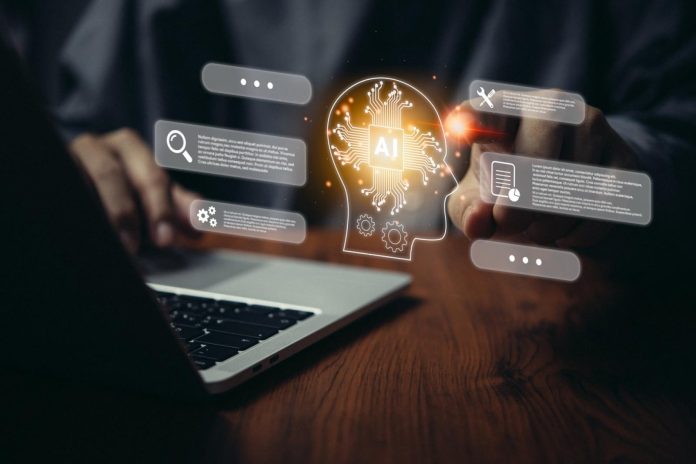The digital landscape is rapidly evolving, with AI at the forefront of this transformation. As new AI models and applications are developed daily, having safe and controlled testing and development environments is crucial.
This is where an AI sandbox comes into play — think of it as a virtual playground where developers and regulators can experiment with AI without risking real-world harm. This controlled setting is vital for fostering innovation while ensuring safety and ethical use.
Table of contents
What are Sandbox Development Environments?
A sandbox development environment is a self-contained, isolated setting for testing code and software. It’s a secure space where programmers can build and run new applications without affecting production systems or live data. In AI contexts, developers can train models, test algorithms, and explore new ideas without risking system-wide failures or security breaches. This isolation is a critical feature, providing a safety net for experimentation.
For example, imagine a team building an AI model to detect fraud in financial transactions. They can’t just unleash a new, untested model on live client data. A mistake could lead to millions of dollars in losses or incorrectly flag legitimate transactions. In a testing environment, they can feed the model replicated data, adjust parameters, and evaluate performance in a controlled setting. They can simulate various scenarios and observe the model’s response without any consequences. This process of testing and refining is how robust and reliable AI systems are built.
This approach isn’t just for big companies. Individual developers and small teams also benefit greatly. They can experiment with open-source AI models, integrate various APIs, and acquire new skills without worrying about compromising their primary work environment. Testing environments offer a low-stakes approach to exploring complex technologies, which is crucial for innovation and skill development in the rapidly evolving AI field.

The Role of Regulatory Sandboxes in AI Innovation
While testing and development environments serve developers, regulatory sandboxes serve a different but equally important purpose. They’re controlled environments set up by government bodies or regulatory agencies to allow companies to test new products and services under relaxed regulations. This approach is particularly useful for emerging technologies, such as AI, where existing laws may not apply or may be overly restrictive.
The primary goal is to strike a balance between innovation and public protection by allowing regulators to observe how new AI products function in limited, real-world settings. They can see potential benefits and risks firsthand. This hands-on approach will enable them to gather the data needed to create effective and balanced regulations. Without this insight, they might create overly broad rules that could stifle innovation.
For instance, consider a new AI-powered telemedicine service. A company could get permission to test its service with a small group of patients in a regulatory sandbox. The regulators could then monitor:
- The AI’s diagnostic accuracy
- Its data privacy measures
- Its interaction with medical professionals
Based on these observations, they can determine the necessary regulations for full-scale deployment. This process helps create clear and practical guidelines for the entire industry. It’s a win-win: companies can bring new products to market faster, and the public benefits from well-informed regulations.
The collaborative nature of regulatory sandboxes is also key. It creates dialogue between innovators and regulators. Companies can explain their technology, and regulators can voice their concerns. This open exchange fosters trust and a shared understanding. This demonstrates that governments aren’t just regulatory roadblocks but active partners in shaping a responsible technological future. This is crucial for navigating the complex ethical and societal issues associated with advanced AI.
Key Sandbox Rules for Safe and Effective Testing
To ensure that both development and regulatory sandboxes function as intended, clear rules are necessary. These rules form the backbone of secure and productive testing environments by defining what’s allowed and prohibited, as well as establishing measures to prevent misuse.
The first rule is isolation. The AI sandbox must be separated from live systems and sensitive data. This is non-negotiable. If a model crashes or misbehaves, it should not affect anything outside the testing environment. This can be achieved through virtual machines, containerization, or other forms of network segmentation.
Second, data must be anonymized or synthetic. Personally identifiable information (PII) should never be used for training or testing purposes. Development sandbox environments should use either synthetic data or sanitized versions of real data with all private details removed. This protects user privacy and reduces the risk of data breaches.
Third, logging and monitoring are essential. Every action within the testing environment should be logged. This creates an audit trail for debugging issues, tracking a model’s performance, and ensuring that rules are being followed. For regulatory sandboxes, this data is critical for regulators to make informed decisions.
Ultimately, a well-defined scope is necessary. Testing environments should have clear purposes and time limits. For a regulatory sandbox, the company might have a specific goal, such as testing a new fraud detection algorithm, and a limited timeframe, typically six months. This prevents testing environments from becoming loopholes for indefinite, unregulated operations.
The AI Sandbox Worker – A New Role in Tech
As AI becomes more integrated into our lives, a new type of job is emerging: the AI sandbox worker. This isn’t just a developer or engineer, but a specialized professional who operates and manages testing environments. Their role is to ensure the integrity, security, and efficiency of the AI testing process.
The AI sandbox worker is a critical link between developers and the rest of the organization. They handle environment setup, resource provisioning, and rule enforcement. They need a deep understanding of both AI models and cybersecurity principles. Their tasks often include:
- Creating and maintaining isolated environments
- Generating or acquiring synthetic data for testing
- Monitoring AI sandboxes for security vulnerabilities
- Analyzing performance logs and providing reports to developers
- Collaborating with legal and compliance teams to ensure sandboxes meet regulatory requirements
This role requires a unique mix of technical skills, attention to detail, and a strong sense of responsibility. They’re the gatekeepers of AI development, ensuring that every model is tested safely and ethically before being deployed in production environments.
The importance of this role cannot be overstated. A well-managed sandbox can save a company from costly mistakes, legal trouble, and reputational damage. It enables rapid innovation while minimizing risk. The AI sandbox worker is the person who makes all of this possible.
The Critical AI Tools Report: Measuring Success
After a period of testing in a sandbox, the results must be carefully analyzed and documented. This is where the AI tools report becomes a vital document. It summarizes findings from the testing phase and provides a comprehensive overview of the AI model’s performance. This report isn’t just for developers — it’s also for managers, regulators, and other stakeholders who need to understand the AI’s capabilities and limitations.
A good AI tools report should include several key components:
- Performance Metrics. This includes accuracy, precision, recall, and other relevant metrics. The report should compare the model’s performance against a baseline or predefined goals.
- Ethical and Bias Analysis. It’s crucial to report on any biases found in the model. Did the model perform differently on certain demographic groups? The report must detail these findings and suggest mitigation strategies.
- Security Assessment. The report should document any security vulnerabilities discovered during the testing process. For example, was the model susceptible to adversarial attacks? This section helps make the model more robust.
- Resource Utilization. How much computing power and memory did the model use? This data is important for scaling the model in a production environment.
- Recommendations. Finally, the report should provide clear recommendations for next steps. Should the model be deployed? Does it need additional training? Are there specific areas that need further refinement?
This AI tools report is the final deliverable from the sandbox. It provides the evidence needed to move forward with confidence. Without a detailed and honest report, the entire testing in development environments process loses its value. It serves as a single source of truth about the AI’s readiness for the real world.











